|
Geant4
10.03.p01
|
|
Geant4
10.03.p01
|
#include <LorentzVector.h>
Public Types | |
| enum | { X =0, Y =1, Z =2, T =3, NUM_COORDINATES =4, SIZE =NUM_COORDINATES } |
Public Member Functions | |
| HepLorentzVector (double x, double y, double z, double t) | |
| HepLorentzVector (double x, double y, double z) | |
| HepLorentzVector (double t) | |
| HepLorentzVector () | |
| HepLorentzVector (const Hep3Vector &p, double e) | |
| HepLorentzVector (double e, const Hep3Vector &p) | |
| HepLorentzVector (const HepLorentzVector &) | |
| ~HepLorentzVector () | |
| operator const Hep3Vector & () const | |
| operator Hep3Vector & () | |
| double | x () const |
| double | y () const |
| double | z () const |
| double | t () const |
| void | setX (double) |
| void | setY (double) |
| void | setZ (double) |
| void | setT (double) |
| double | px () const |
| double | py () const |
| double | pz () const |
| double | e () const |
| void | setPx (double) |
| void | setPy (double) |
| void | setPz (double) |
| void | setE (double) |
| Hep3Vector | vect () const |
| void | setVect (const Hep3Vector &) |
| double | theta () const |
| double | cosTheta () const |
| double | phi () const |
| double | rho () const |
| void | setTheta (double) |
| void | setPhi (double) |
| void | setRho (double) |
| double | operator() (int) const |
| double | operator[] (int) const |
| double & | operator() (int) |
| double & | operator[] (int) |
| HepLorentzVector & | operator= (const HepLorentzVector &) |
| HepLorentzVector | operator+ (const HepLorentzVector &) const |
| HepLorentzVector & | operator+= (const HepLorentzVector &) |
| HepLorentzVector | operator- (const HepLorentzVector &) const |
| HepLorentzVector & | operator-= (const HepLorentzVector &) |
| HepLorentzVector | operator- () const |
| HepLorentzVector & | operator*= (double) |
| HepLorentzVector & | operator/= (double) |
| bool | operator== (const HepLorentzVector &) const |
| bool | operator!= (const HepLorentzVector &) const |
| double | perp2 () const |
| double | perp () const |
| void | setPerp (double) |
| double | perp2 (const Hep3Vector &) const |
| double | perp (const Hep3Vector &) const |
| double | angle (const Hep3Vector &) const |
| double | mag2 () const |
| double | m2 () const |
| double | mag () const |
| double | m () const |
| double | mt2 () const |
| double | mt () const |
| double | et2 () const |
| double | et () const |
| double | dot (const HepLorentzVector &) const |
| double | operator* (const HepLorentzVector &) const |
| double | invariantMass2 (const HepLorentzVector &w) const |
| double | invariantMass (const HepLorentzVector &w) const |
| void | setVectMag (const Hep3Vector &spatial, double magnitude) |
| void | setVectM (const Hep3Vector &spatial, double mass) |
| double | plus () const |
| double | minus () const |
| Hep3Vector | boostVector () const |
| HepLorentzVector & | boost (double, double, double) |
| HepLorentzVector & | boost (const Hep3Vector &) |
| HepLorentzVector & | boostX (double beta) |
| HepLorentzVector & | boostY (double beta) |
| HepLorentzVector & | boostZ (double beta) |
| double | rapidity () const |
| double | pseudoRapidity () const |
| bool | isTimelike () const |
| bool | isSpacelike () const |
| bool | isLightlike (double epsilon=tolerance) const |
| HepLorentzVector & | rotateX (double) |
| HepLorentzVector & | rotateY (double) |
| HepLorentzVector & | rotateZ (double) |
| HepLorentzVector & | rotateUz (const Hep3Vector &) |
| HepLorentzVector & | rotate (double, const Hep3Vector &) |
| HepLorentzVector & | operator*= (const HepRotation &) |
| HepLorentzVector & | transform (const HepRotation &) |
| HepLorentzVector & | operator*= (const HepLorentzRotation &) |
| HepLorentzVector & | transform (const HepLorentzRotation &) |
| void | set (double x, double y, double z, double t) |
| void | set (double x, double y, double z, Tcomponent t) |
| HepLorentzVector (double x, double y, double z, Tcomponent t) | |
| void | set (Tcomponent t, double x, double y, double z) |
| HepLorentzVector (Tcomponent t, double x, double y, double z) | |
| void | set (double t) |
| void | set (Tcomponent t) |
| HepLorentzVector (Tcomponent t) | |
| void | set (const Hep3Vector &v) |
| HepLorentzVector (const Hep3Vector &v) | |
| HepLorentzVector & | operator= (const Hep3Vector &v) |
| void | set (const Hep3Vector &v, double t) |
| void | set (double t, const Hep3Vector &v) |
| double | getX () const |
| double | getY () const |
| double | getZ () const |
| double | getT () const |
| Hep3Vector | v () const |
| Hep3Vector | getV () const |
| void | setV (const Hep3Vector &) |
| void | setV (double x, double y, double z) |
| void | setRThetaPhi (double r, double theta, double phi) |
| void | setREtaPhi (double r, double eta, double phi) |
| void | setRhoPhiZ (double rho, double phi, double z) |
| int | compare (const HepLorentzVector &w) const |
| bool | operator> (const HepLorentzVector &w) const |
| bool | operator< (const HepLorentzVector &w) const |
| bool | operator>= (const HepLorentzVector &w) const |
| bool | operator<= (const HepLorentzVector &w) const |
| bool | isNear (const HepLorentzVector &w, double epsilon=tolerance) const |
| double | howNear (const HepLorentzVector &w) const |
| bool | isNearCM (const HepLorentzVector &w, double epsilon=tolerance) const |
| double | howNearCM (const HepLorentzVector &w) const |
| bool | isParallel (const HepLorentzVector &w, double epsilon=tolerance) const |
| double | howParallel (const HepLorentzVector &w) const |
| double | deltaR (const HepLorentzVector &v) const |
| double | howLightlike () const |
| double | euclideanNorm2 () const |
| double | euclideanNorm () const |
| double | restMass2 () const |
| double | invariantMass2 () const |
| double | restMass () const |
| double | invariantMass () const |
| HepLorentzVector | rest4Vector () const |
| double | beta () const |
| double | gamma () const |
| double | eta () const |
| double | eta (const Hep3Vector &ref) const |
| double | rapidity (const Hep3Vector &ref) const |
| double | coLinearRapidity () const |
| Hep3Vector | findBoostToCM () const |
| Hep3Vector | findBoostToCM (const HepLorentzVector &w) const |
| double | et2 (const Hep3Vector &) const |
| double | et (const Hep3Vector &) const |
| double | diff2 (const HepLorentzVector &w) const |
| double | delta2Euclidean (const HepLorentzVector &w) const |
| double | plus (const Hep3Vector &ref) const |
| double | minus (const Hep3Vector &ref) const |
| HepLorentzVector & | rotate (const Hep3Vector &axis, double delta) |
| HepLorentzVector & | rotate (const HepAxisAngle &ax) |
| HepLorentzVector & | rotate (const HepEulerAngles &e) |
| HepLorentzVector & | rotate (double phi, double theta, double psi) |
| HepLorentzVector & | boost (const Hep3Vector &axis, double beta) |
Static Public Member Functions | |
| static ZMpvMetric_t | setMetric (ZMpvMetric_t met) |
| static ZMpvMetric_t | getMetric () |
| static double | getTolerance () |
| static double | setTolerance (double tol) |
Friends | |
| HepLorentzVector | rotationXOf (const HepLorentzVector &vec, double delta) |
| HepLorentzVector | rotationYOf (const HepLorentzVector &vec, double delta) |
| HepLorentzVector | rotationZOf (const HepLorentzVector &vec, double delta) |
| HepLorentzVector | rotationOf (const HepLorentzVector &vec, const Hep3Vector &axis, double delta) |
| HepLorentzVector | rotationOf (const HepLorentzVector &vec, const HepAxisAngle &ax) |
| HepLorentzVector | rotationOf (const HepLorentzVector &vec, const HepEulerAngles &e) |
| HepLorentzVector | rotationOf (const HepLorentzVector &vec, double phi, double theta, double psi) |
| HepLorentzVector | boostXOf (const HepLorentzVector &vec, double beta) |
| HepLorentzVector | boostYOf (const HepLorentzVector &vec, double beta) |
| HepLorentzVector | boostZOf (const HepLorentzVector &vec, double beta) |
| HepLorentzVector | boostOf (const HepLorentzVector &vec, const Hep3Vector &betaVector) |
| HepLorentzVector | boostOf (const HepLorentzVector &vec, const Hep3Vector &axis, double beta) |
Definition at line 72 of file LorentzVector.h.
| anonymous enum |
| Enumerator | |
|---|---|
| X | |
| Y | |
| Z | |
| T | |
| NUM_COORDINATES | |
| SIZE | |
Definition at line 76 of file LorentzVector.h.
|
inline |
|
inline |
|
explicit |
|
inline |

|
inline |
|
inline |
|
inline |
|
inline |
|
inline |
|
inline |
|
inlineexplicit |
|
inlineexplicit |
|
inline |
| double CLHEP::HepLorentzVector::beta | ( | ) | const |
Definition at line 75 of file LorentzVectorK.cc.

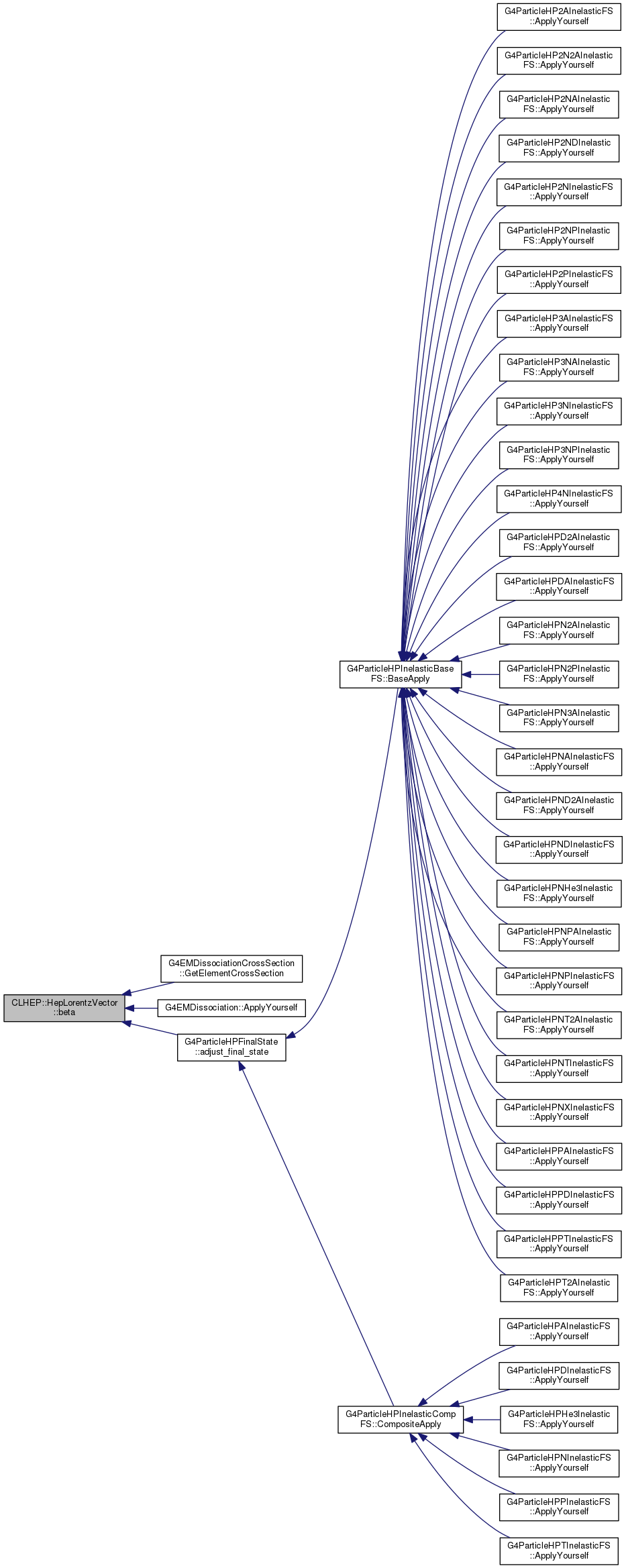
| HepLorentzVector & CLHEP::HepLorentzVector::boost | ( | double | bx, |
| double | by, | ||
| double | bz | ||
| ) |
Definition at line 59 of file LorentzVector.cc.
|
inline |
| HepLorentzVector & CLHEP::HepLorentzVector::boost | ( | const Hep3Vector & | axis, |
| double | beta | ||
| ) |
| Hep3Vector CLHEP::HepLorentzVector::boostVector | ( | ) | const |
Definition at line 177 of file LorentzVector.cc.

| HepLorentzVector & CLHEP::HepLorentzVector::boostX | ( | double | beta | ) |
| HepLorentzVector & CLHEP::HepLorentzVector::boostY | ( | double | beta | ) |
| HepLorentzVector & CLHEP::HepLorentzVector::boostZ | ( | double | beta | ) |
| double CLHEP::HepLorentzVector::coLinearRapidity | ( | ) | const |
| int CLHEP::HepLorentzVector::compare | ( | const HepLorentzVector & | w | ) | const |
Definition at line 29 of file LorentzVectorC.cc.

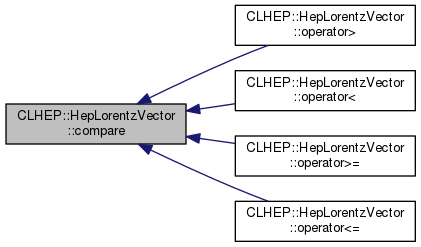
|
inline |
|
inline |
| double CLHEP::HepLorentzVector::deltaR | ( | const HepLorentzVector & | v | ) | const |
Definition at line 195 of file LorentzVectorC.cc.

|
inline |
|
inline |

|
inline |
|
inline |
|
inline |
|
inline |
|
inline |
|
inline |

|
inline |
|
inline |

|
inline |

| Hep3Vector CLHEP::HepLorentzVector::findBoostToCM | ( | ) | const |
Definition at line 223 of file LorentzVectorK.cc.

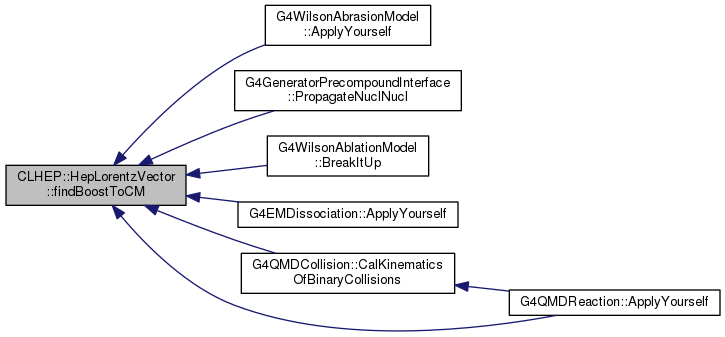
| Hep3Vector CLHEP::HepLorentzVector::findBoostToCM | ( | const HepLorentzVector & | w | ) | const |
| double CLHEP::HepLorentzVector::gamma | ( | ) | const |
Definition at line 94 of file LorentzVectorK.cc.


|
static |
Definition at line 35 of file LorentzVectorK.cc.
|
inline |
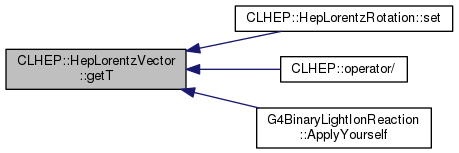
|
static |
Definition at line 249 of file LorentzVector.cc.
|
inline |

|
inline |
|
inline |
|
inline |

| double CLHEP::HepLorentzVector::howLightlike | ( | ) | const |
Definition at line 249 of file LorentzVectorC.cc.

| double CLHEP::HepLorentzVector::howNear | ( | const HepLorentzVector & | w | ) | const |
Definition at line 67 of file LorentzVectorC.cc.


| double CLHEP::HepLorentzVector::howNearCM | ( | const HepLorentzVector & | w | ) | const |
Definition at line 133 of file LorentzVectorC.cc.

| double CLHEP::HepLorentzVector::howParallel | ( | const HepLorentzVector & | w | ) | const |
Definition at line 227 of file LorentzVectorC.cc.

| double CLHEP::HepLorentzVector::invariantMass | ( | const HepLorentzVector & | w | ) | const |
Definition at line 192 of file LorentzVectorK.cc.
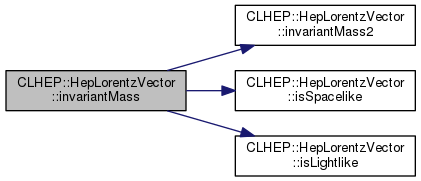

|
inline |
|
inline |
|
inline |

|
inline |

| bool CLHEP::HepLorentzVector::isNear | ( | const HepLorentzVector & | w, |
| double | epsilon = tolerance |
||
| ) | const |
Definition at line 57 of file LorentzVectorC.cc.


| bool CLHEP::HepLorentzVector::isNearCM | ( | const HepLorentzVector & | w, |
| double | epsilon = tolerance |
||
| ) | const |
Definition at line 85 of file LorentzVectorC.cc.

| bool CLHEP::HepLorentzVector::isParallel | ( | const HepLorentzVector & | w, |
| double | epsilon = tolerance |
||
| ) | const |
Definition at line 208 of file LorentzVectorC.cc.

|
inline |

|
inline |
|
inline |
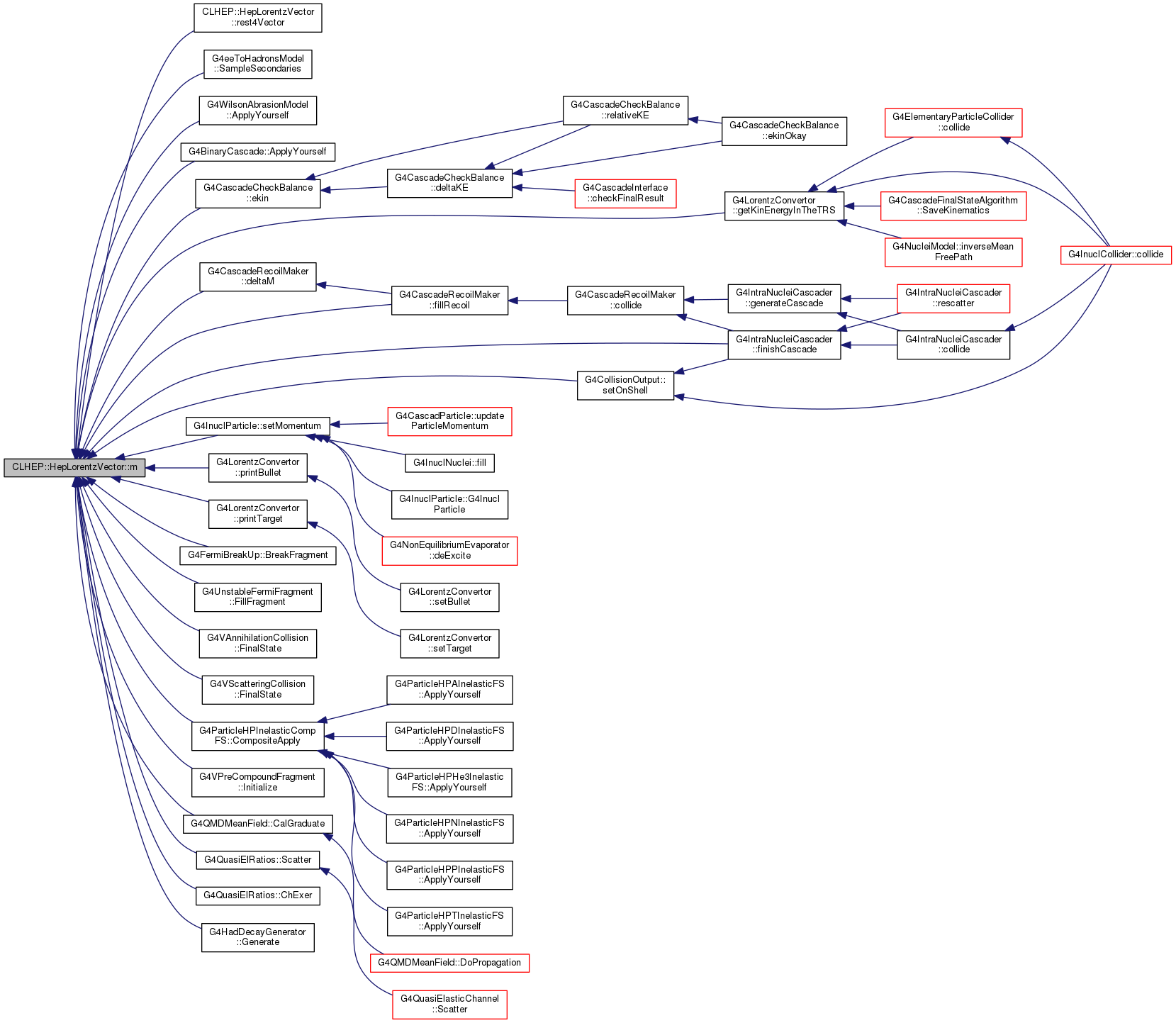
|
inline |

|
inline |
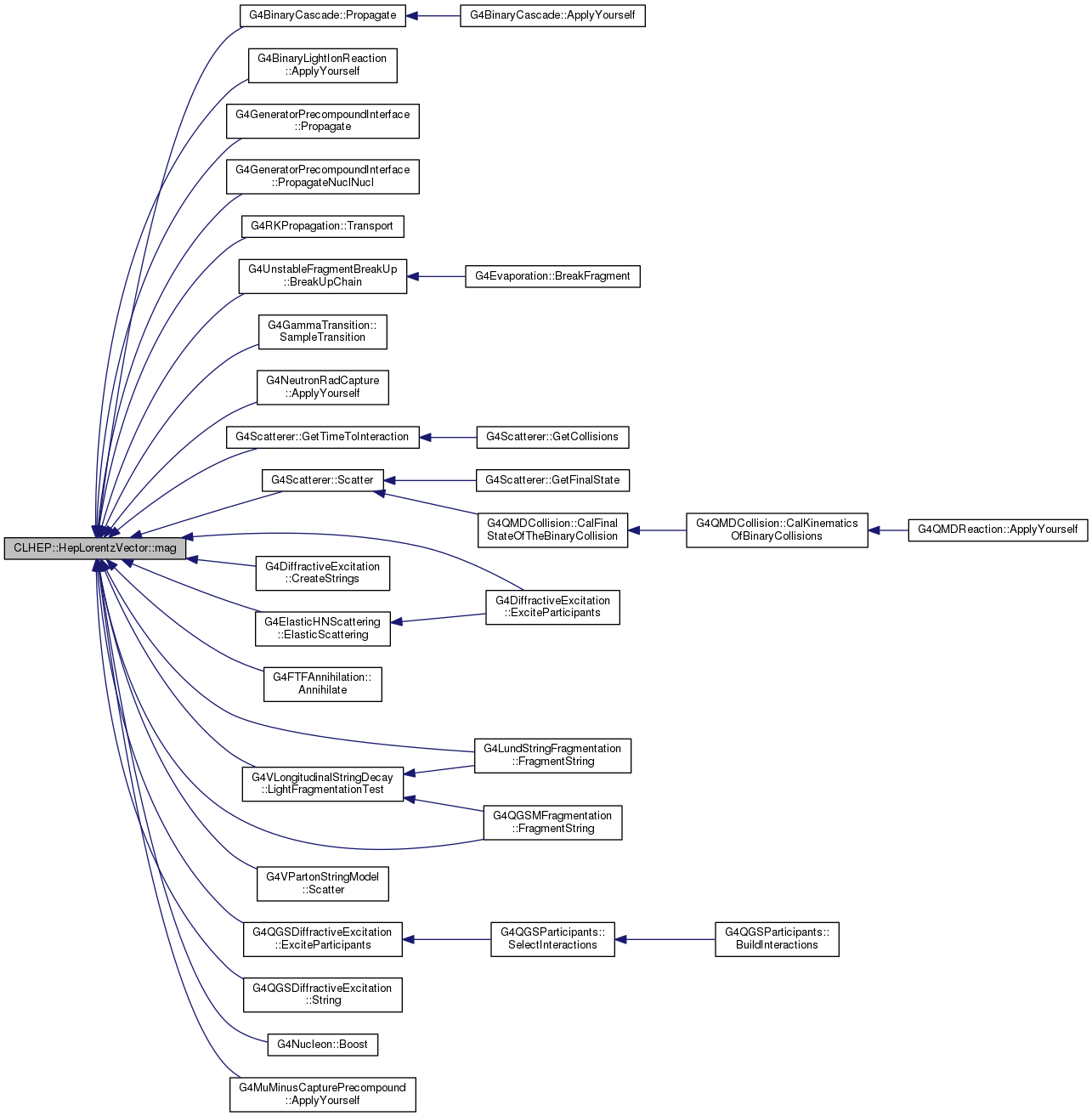
|
inline |
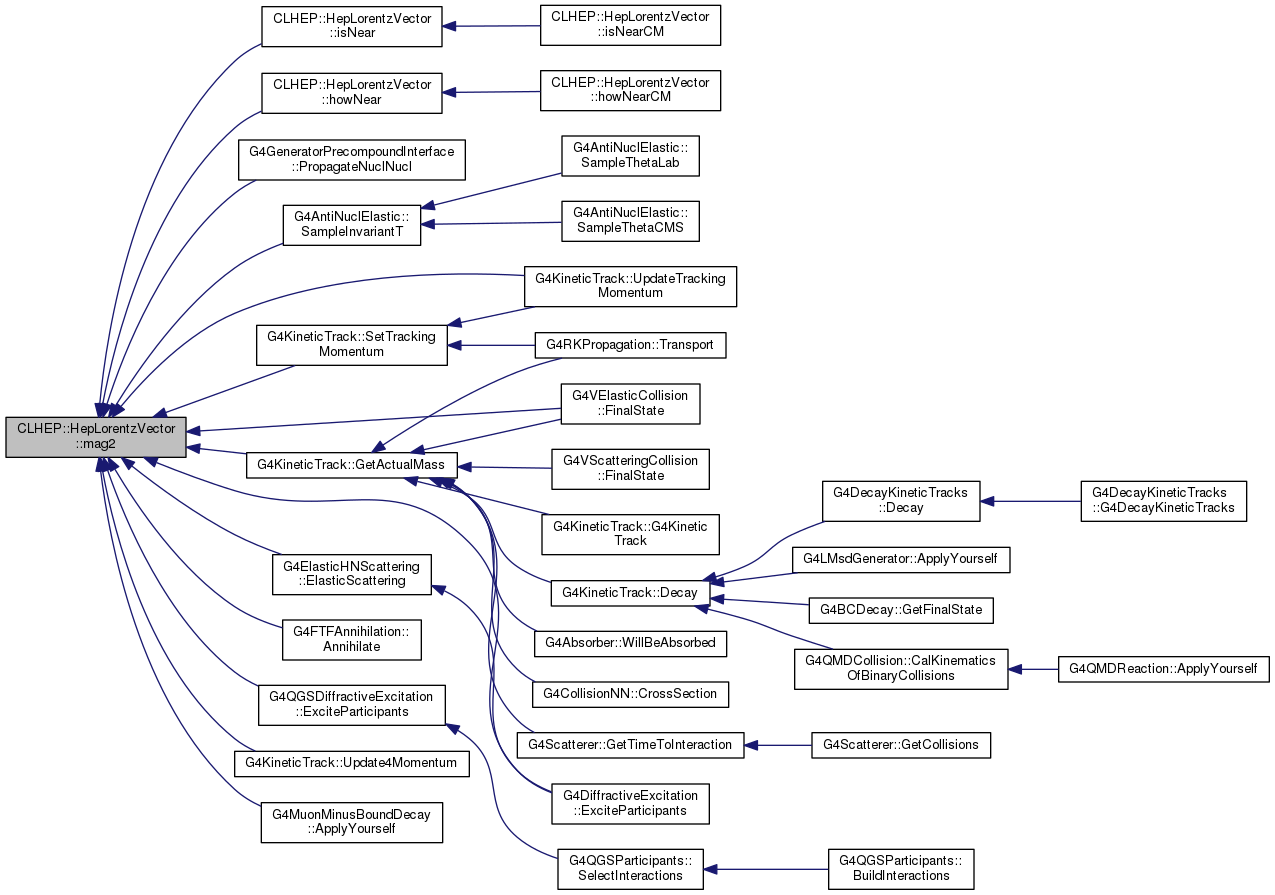
|
inline |

| double CLHEP::HepLorentzVector::minus | ( | const Hep3Vector & | ref | ) | const |
|
inline |
|
inline |
|
inline |
|
inline |
|
inline |
| double CLHEP::HepLorentzVector::operator() | ( | int | i | ) | const |
Definition at line 26 of file LorentzVector.cc.

| double & CLHEP::HepLorentzVector::operator() | ( | int | i | ) |
Definition at line 41 of file LorentzVector.cc.
|
inline |
|
inline |
|
inline |
| HepLorentzVector & CLHEP::HepLorentzVector::operator*= | ( | const HepLorentzRotation & | m1 | ) |
|
inline |
|
inline |
|
inline |
|
inline |
|
inline |
| HepLorentzVector & CLHEP::HepLorentzVector::operator/= | ( | double | c | ) |
Definition at line 152 of file LorentzVector.cc.
| bool CLHEP::HepLorentzVector::operator< | ( | const HepLorentzVector & | w | ) | const |
Definition at line 42 of file LorentzVectorC.cc.

| bool CLHEP::HepLorentzVector::operator<= | ( | const HepLorentzVector & | w | ) | const |
Definition at line 48 of file LorentzVectorC.cc.

|
inline |
|
inline |
|
inline |
| bool CLHEP::HepLorentzVector::operator> | ( | const HepLorentzVector & | w | ) | const |
Definition at line 39 of file LorentzVectorC.cc.

| bool CLHEP::HepLorentzVector::operator>= | ( | const HepLorentzVector & | w | ) | const |
Definition at line 45 of file LorentzVectorC.cc.

|
inline |
|
inline |
|
inline |
|
inline |
|
inline |

|
inline |
|
inline |
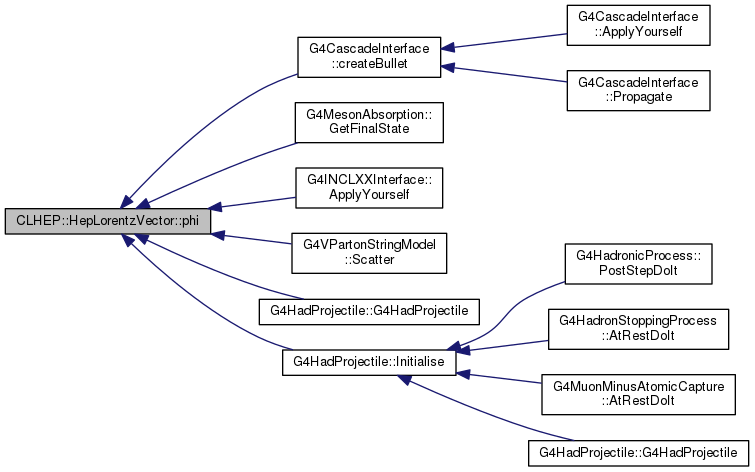
|
inline |

| double CLHEP::HepLorentzVector::plus | ( | const Hep3Vector & | ref | ) | const |
|
inline |
|
inline |
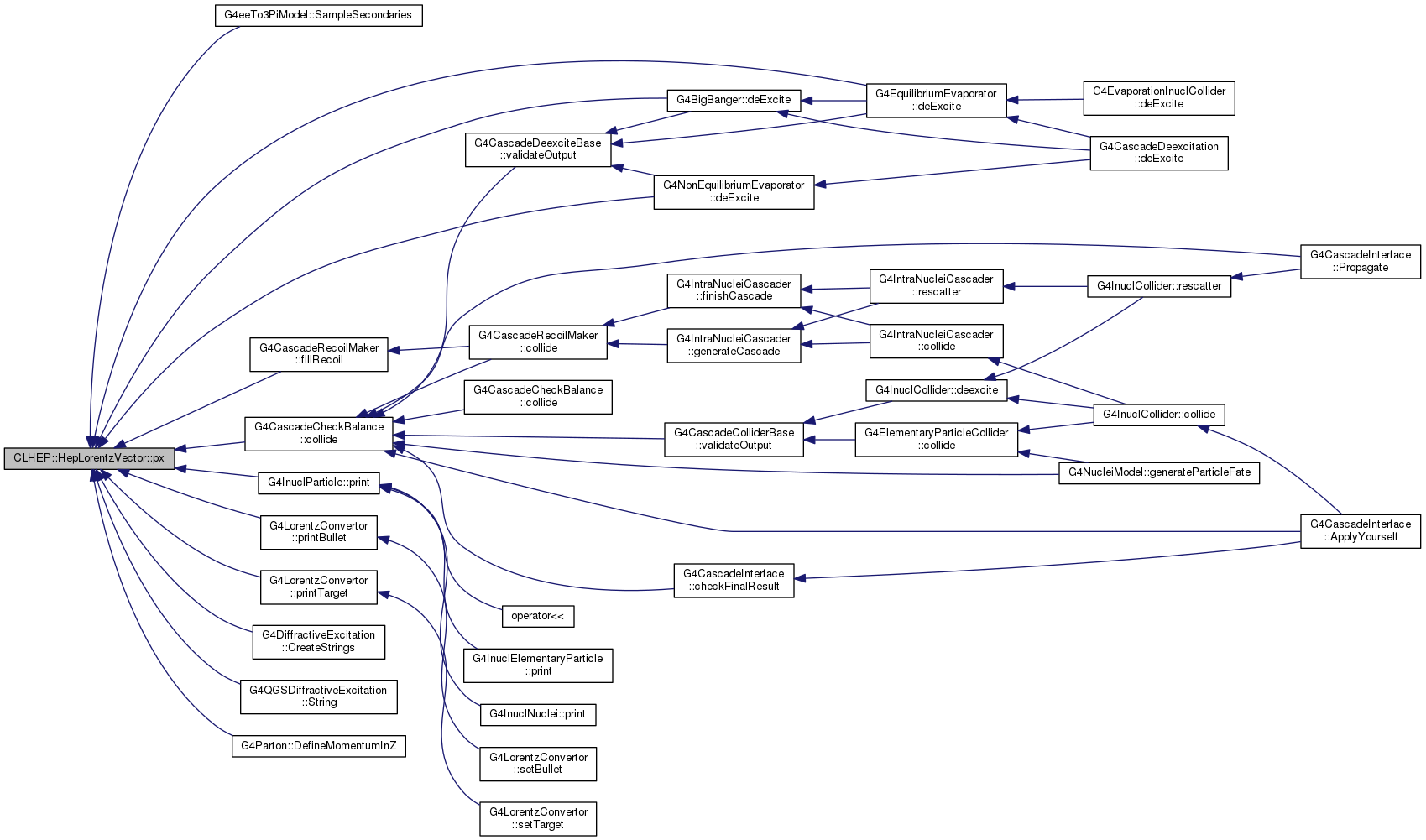
|
inline |
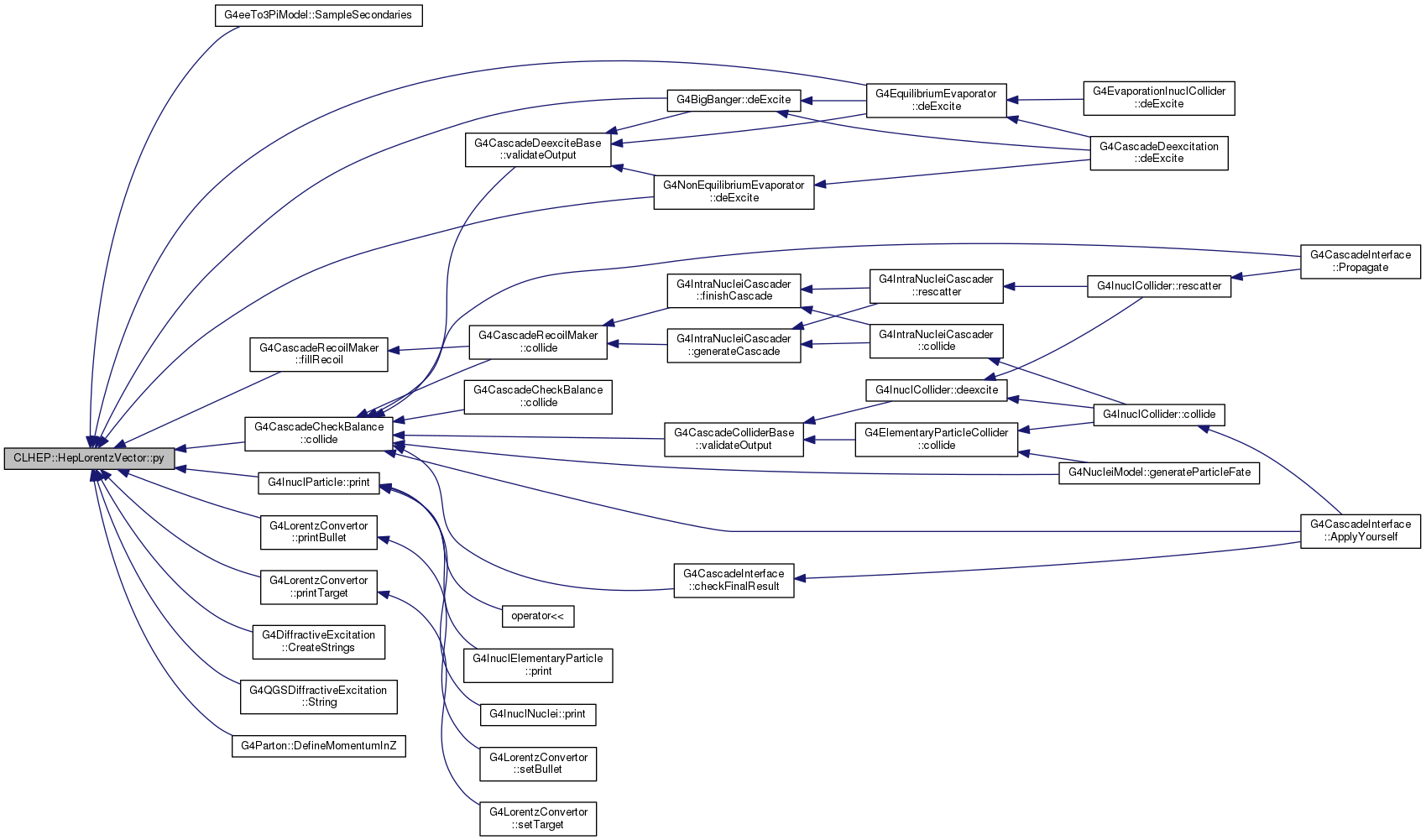
|
inline |
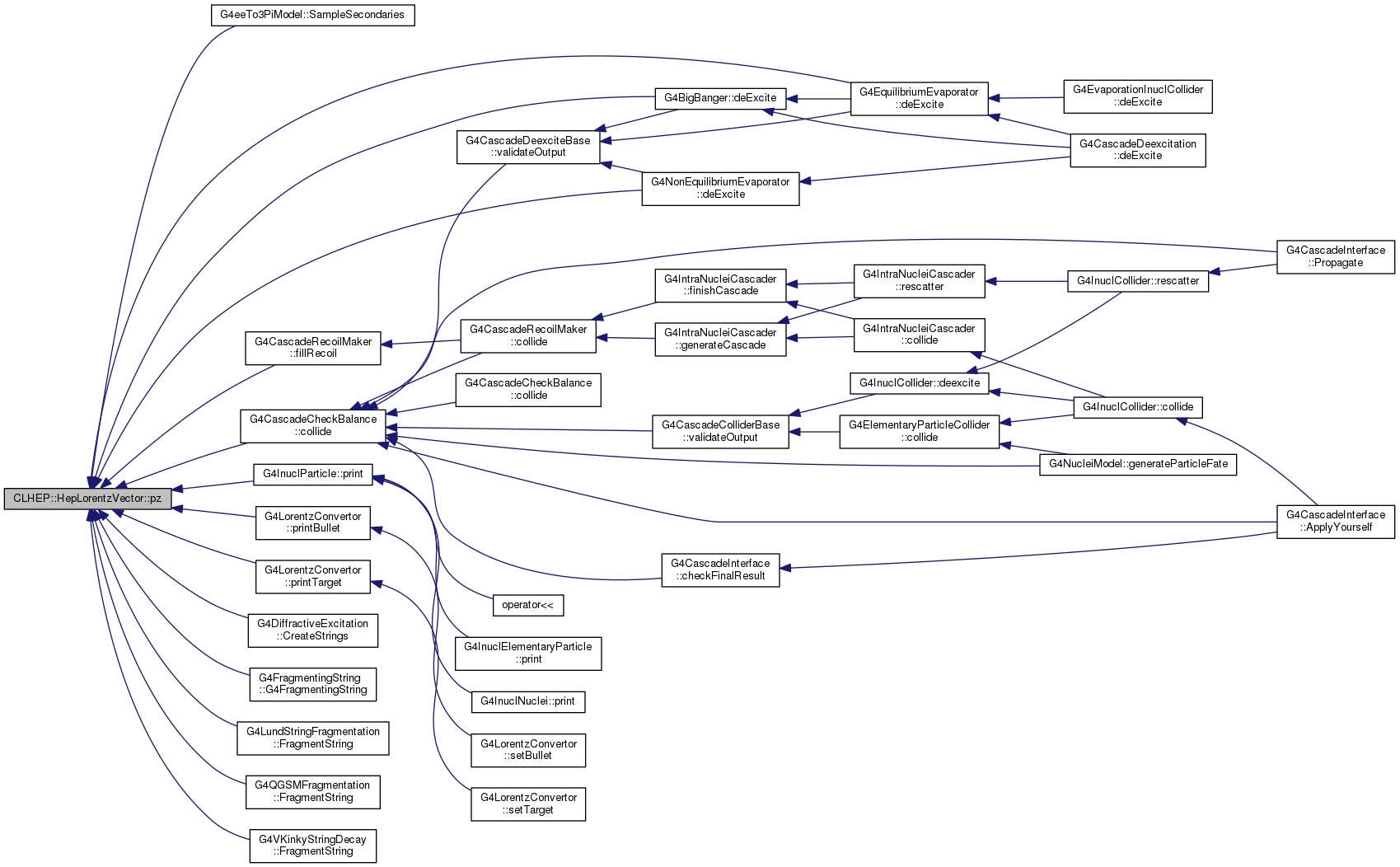
| double CLHEP::HepLorentzVector::rapidity | ( | ) | const |
Definition at line 128 of file LorentzVectorK.cc.


| double CLHEP::HepLorentzVector::rapidity | ( | const Hep3Vector & | ref | ) | const |
| HepLorentzVector CLHEP::HepLorentzVector::rest4Vector | ( | ) | const |
Definition at line 66 of file LorentzVectorK.cc.
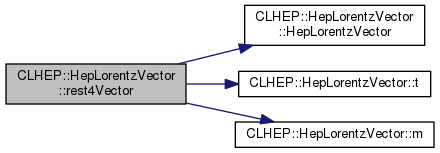
|
inline |
|
inline |
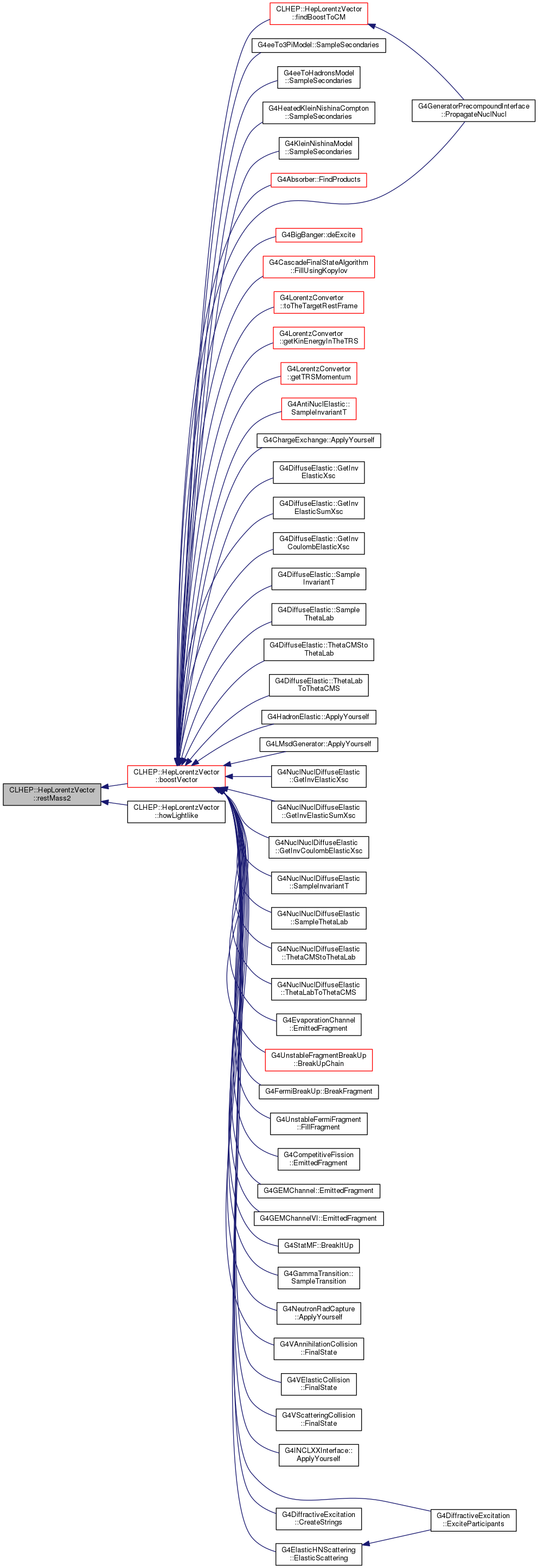
|
inline |
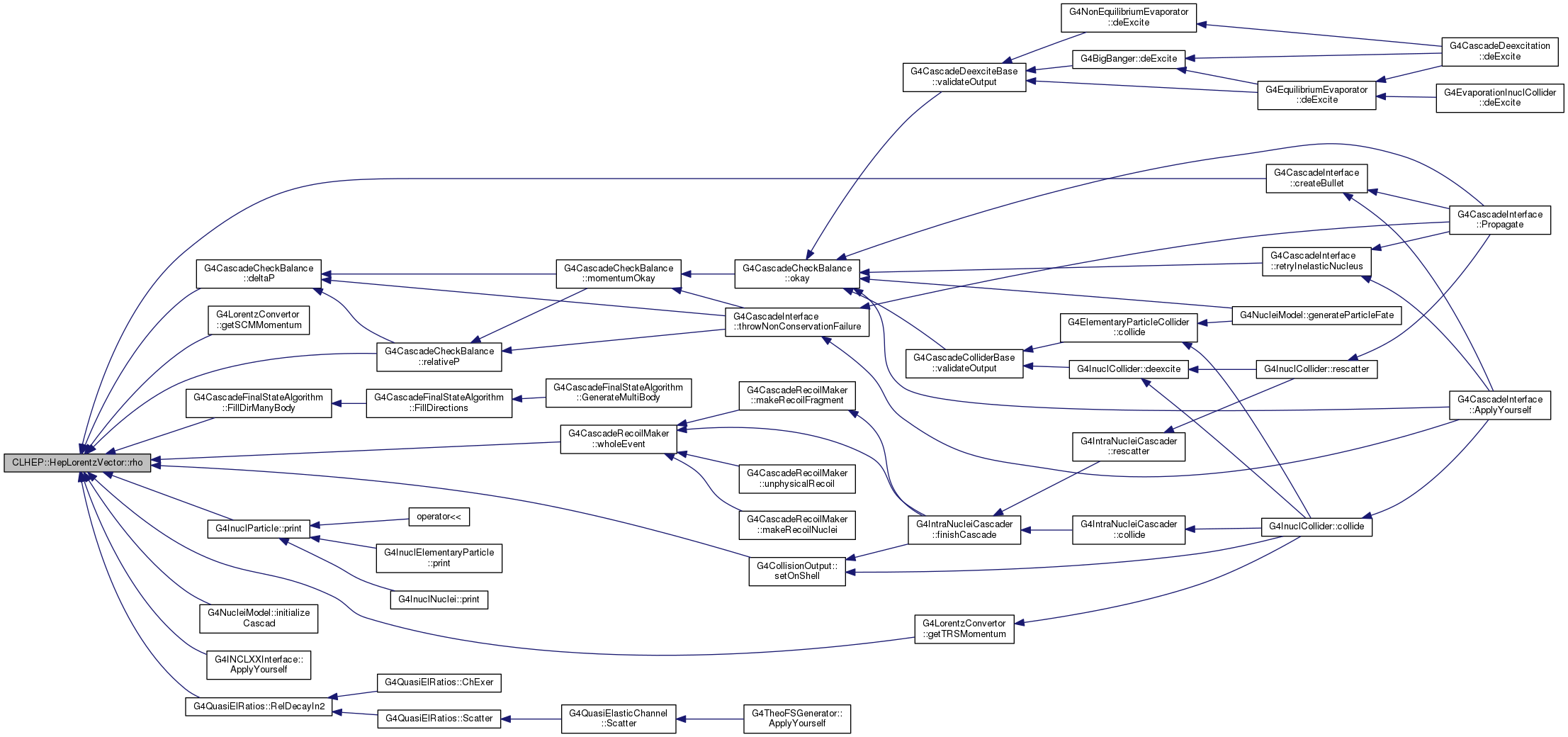
| HepLorentzVector & CLHEP::HepLorentzVector::rotate | ( | double | a, |
| const Hep3Vector & | v1 | ||
| ) |
Definition at line 19 of file LorentzVectorR.cc.


| HepLorentzVector & CLHEP::HepLorentzVector::rotate | ( | const Hep3Vector & | axis, |
| double | delta | ||
| ) |
| HepLorentzVector & CLHEP::HepLorentzVector::rotate | ( | const HepAxisAngle & | ax | ) |
| HepLorentzVector & CLHEP::HepLorentzVector::rotate | ( | const HepEulerAngles & | e | ) |
| HepLorentzVector & CLHEP::HepLorentzVector::rotate | ( | double | phi, |
| double | theta, | ||
| double | psi | ||
| ) |
| HepLorentzVector & CLHEP::HepLorentzVector::rotateUz | ( | const Hep3Vector & | v1 | ) |
Definition at line 85 of file LorentzVector.cc.


| HepLorentzVector & CLHEP::HepLorentzVector::rotateX | ( | double | a | ) |
Definition at line 72 of file LorentzVector.cc.


| HepLorentzVector & CLHEP::HepLorentzVector::rotateY | ( | double | a | ) |
Definition at line 76 of file LorentzVector.cc.

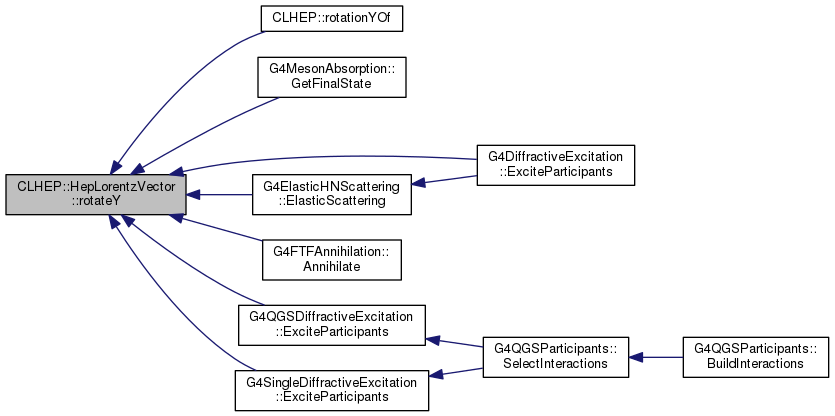
| HepLorentzVector & CLHEP::HepLorentzVector::rotateZ | ( | double | a | ) |
Definition at line 80 of file LorentzVector.cc.

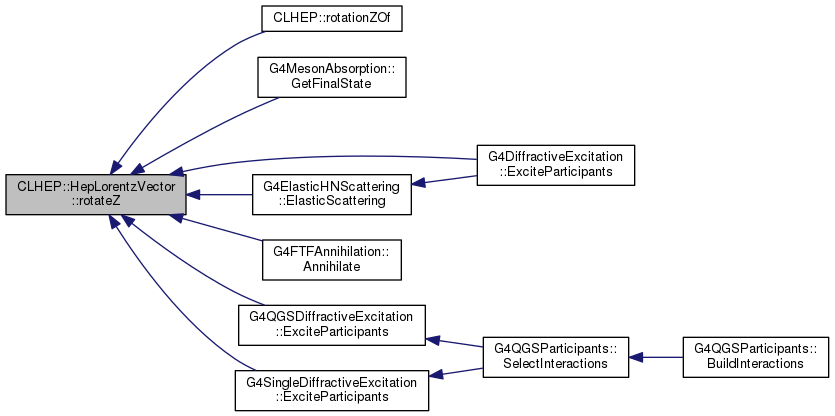
|
inline |
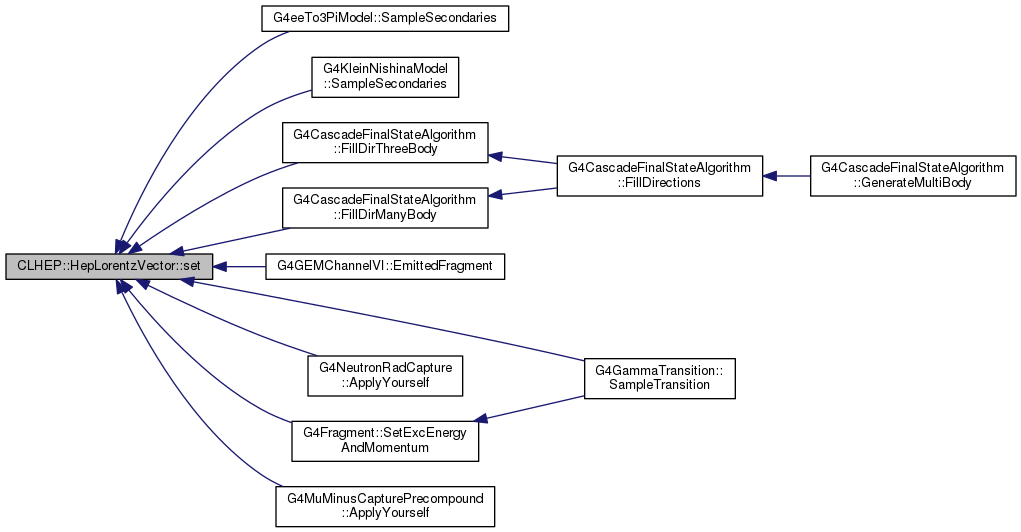
|
inline |
|
inline |
|
inline |
|
inline |
|
inline |
|
inline |
|
inline |
|
inline |
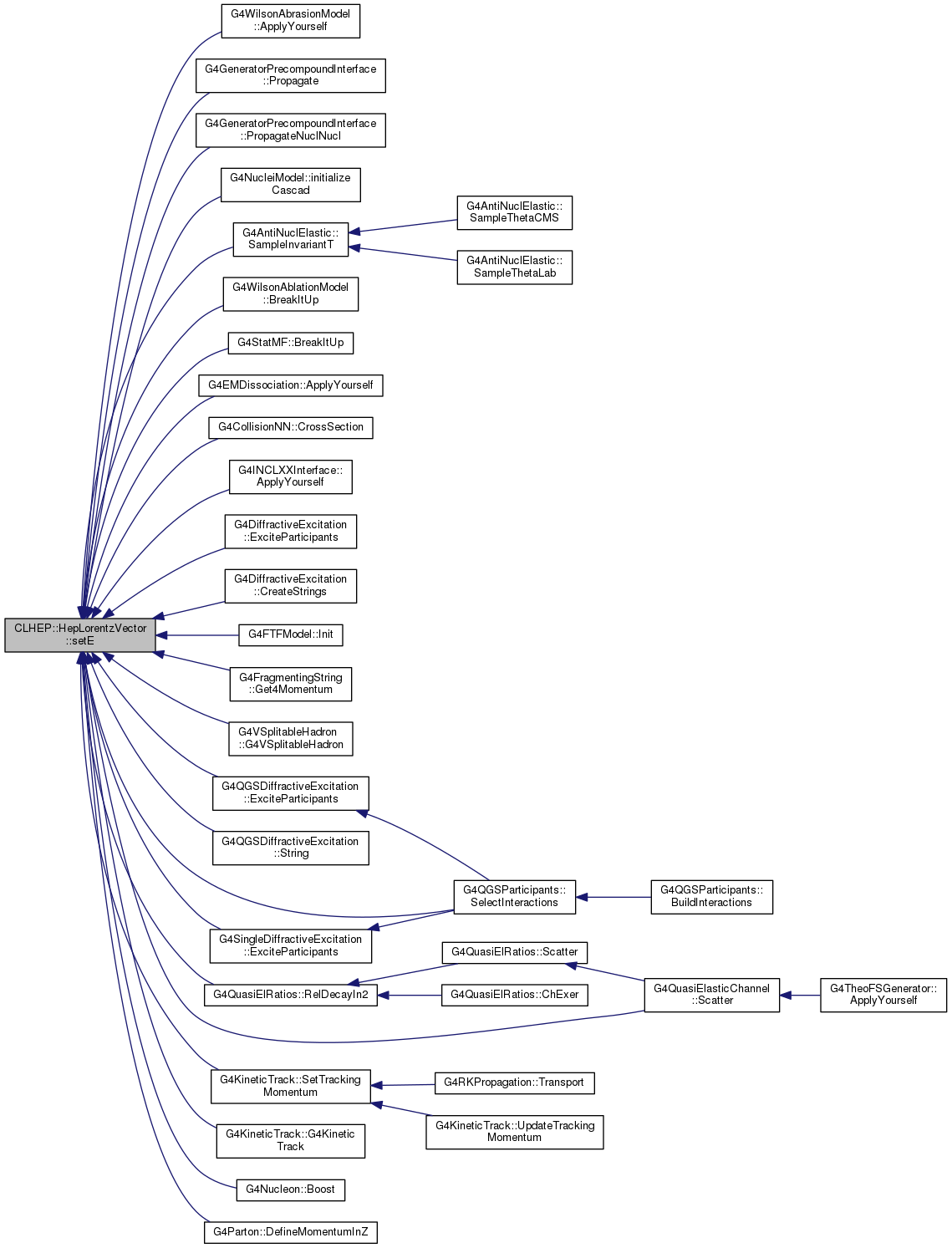
|
static |
Definition at line 25 of file LorentzVectorK.cc.

|
inline |
|
inline |
|
inline |
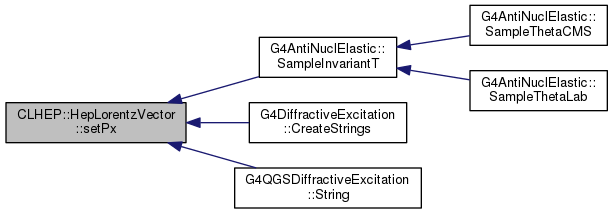
|
inline |
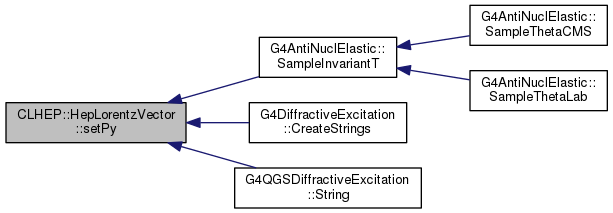
|
inline |
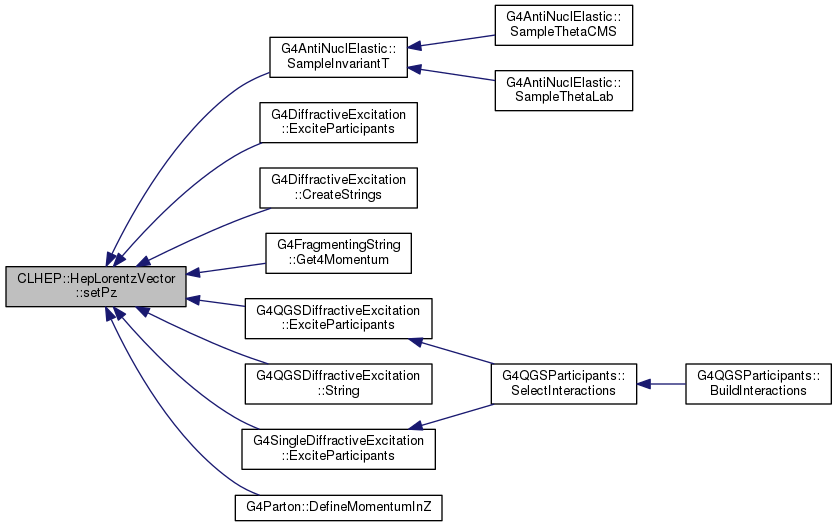
|
inline |
|
inline |
|
inline |
|
inline |
|
inline |
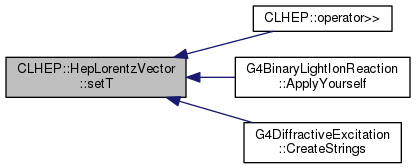
|
inline |
|
static |
Definition at line 242 of file LorentzVector.cc.
|
inline |
|
inline |
|
inline |

|
inline |
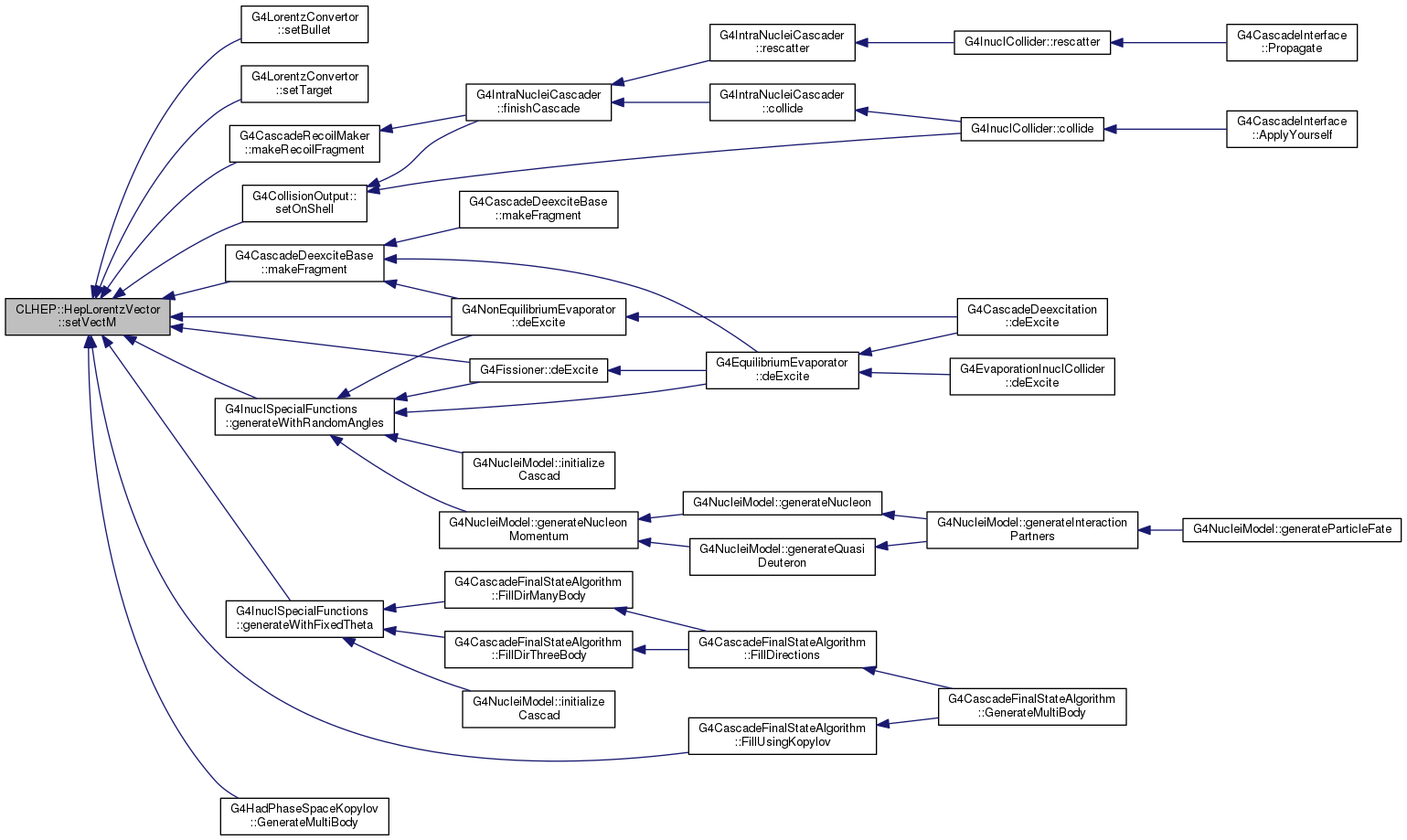
|
inline |
|
inline |

|
inline |

|
inline |

|
inline |
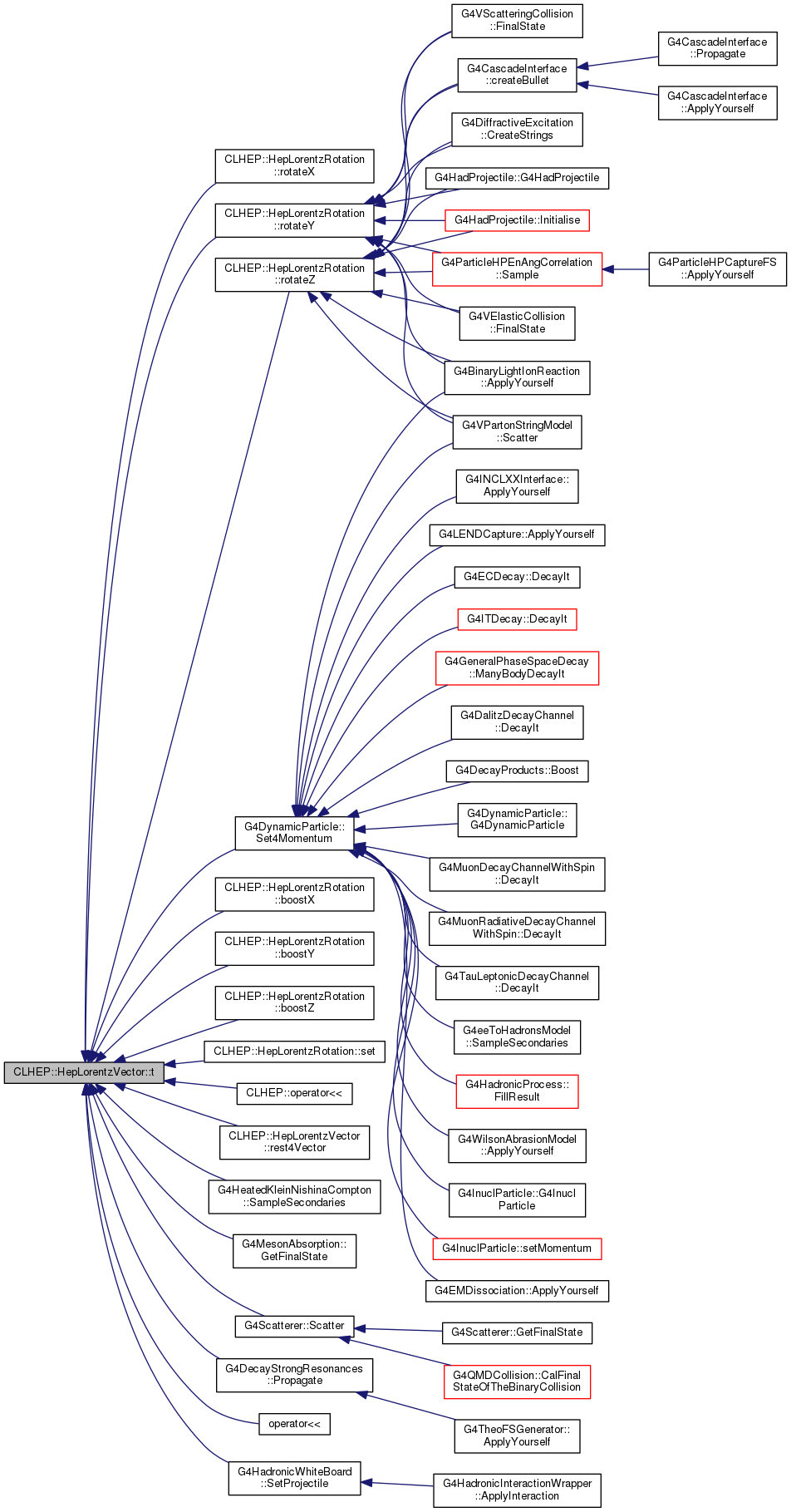
|
inline |
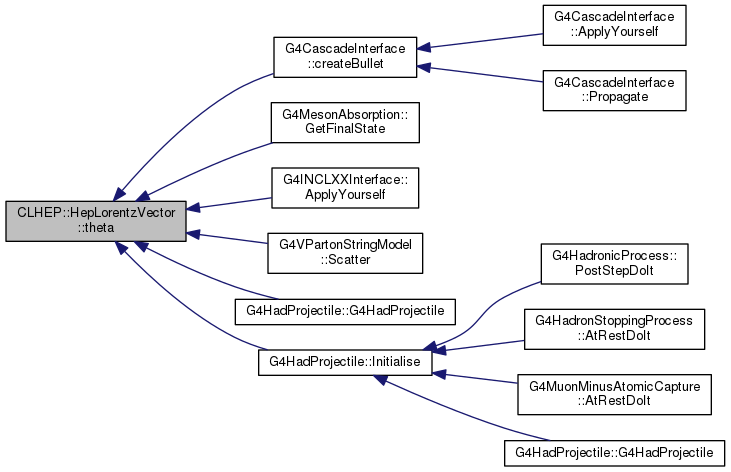
|
inline |

| HepLorentzVector & CLHEP::HepLorentzVector::transform | ( | const HepLorentzRotation & | m1 | ) |
|
inline |
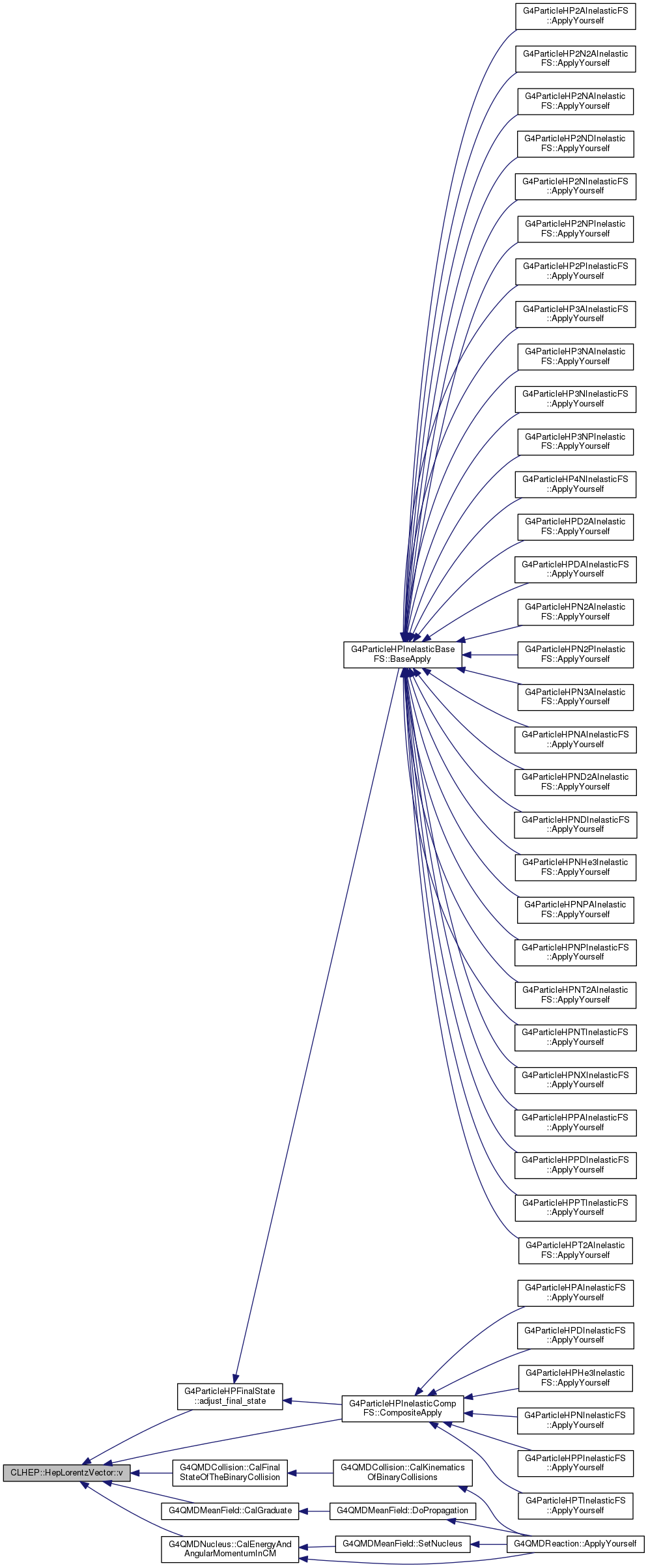
|
inline |
|
inline |
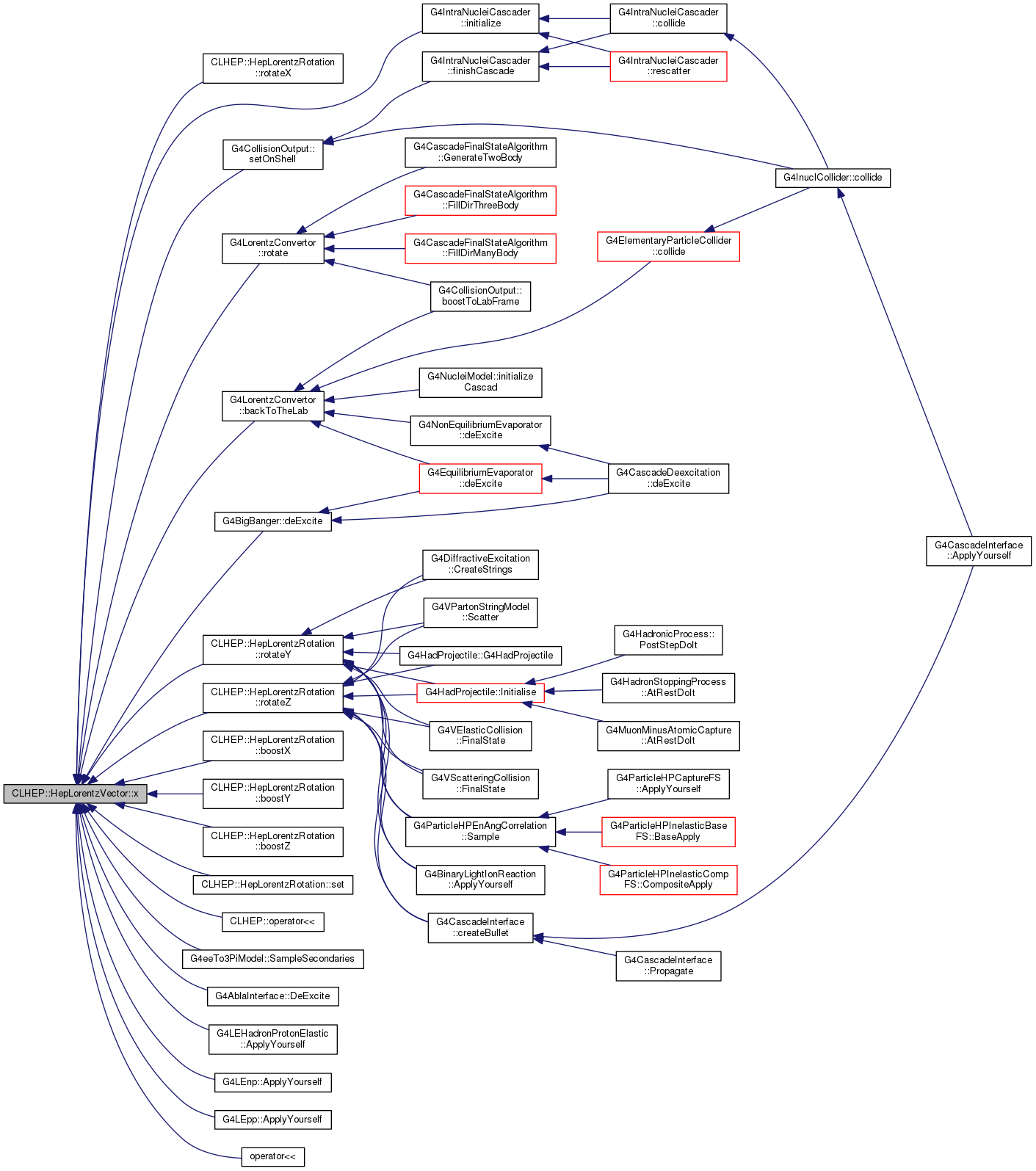
|
inline |
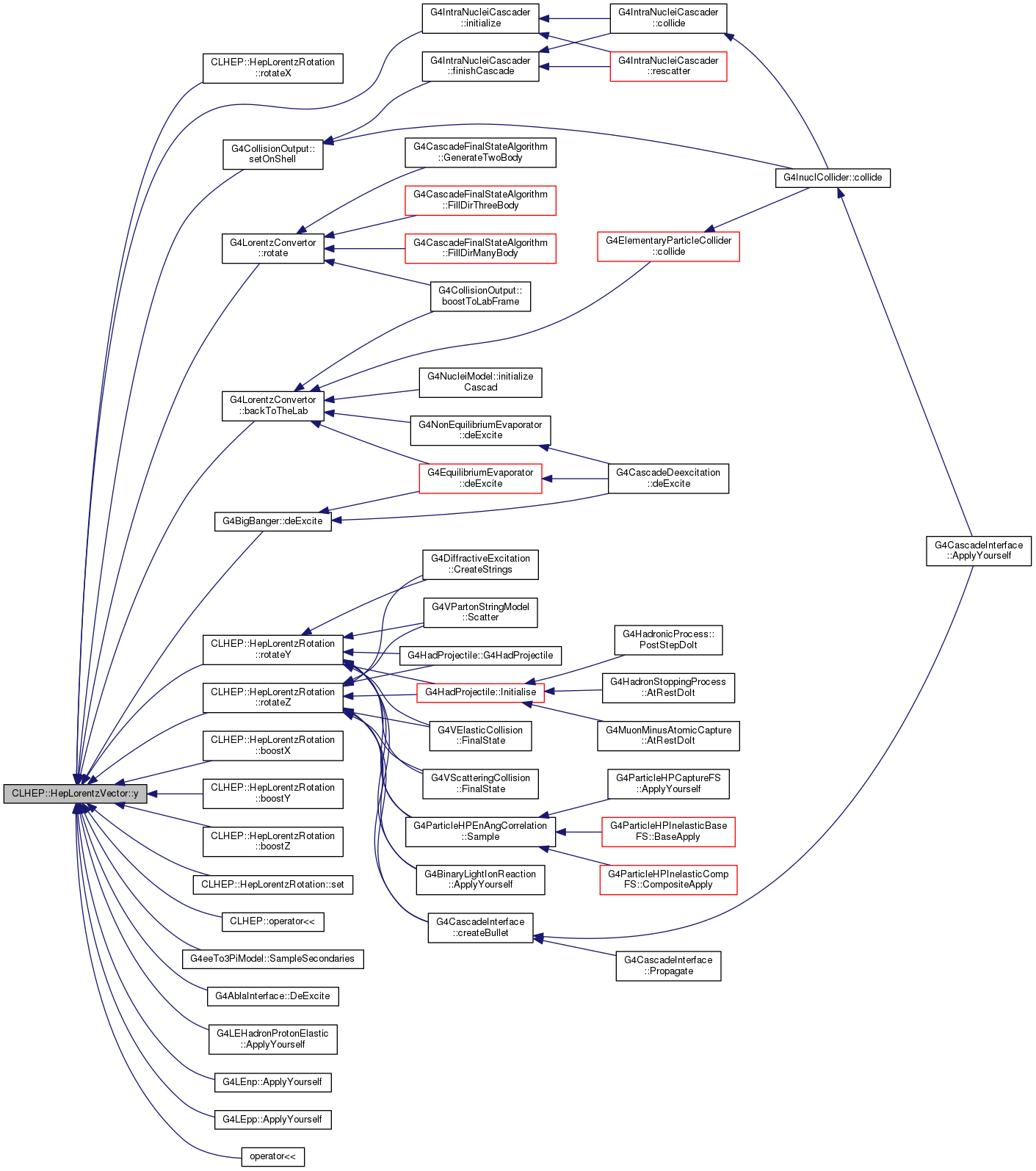
|
inline |
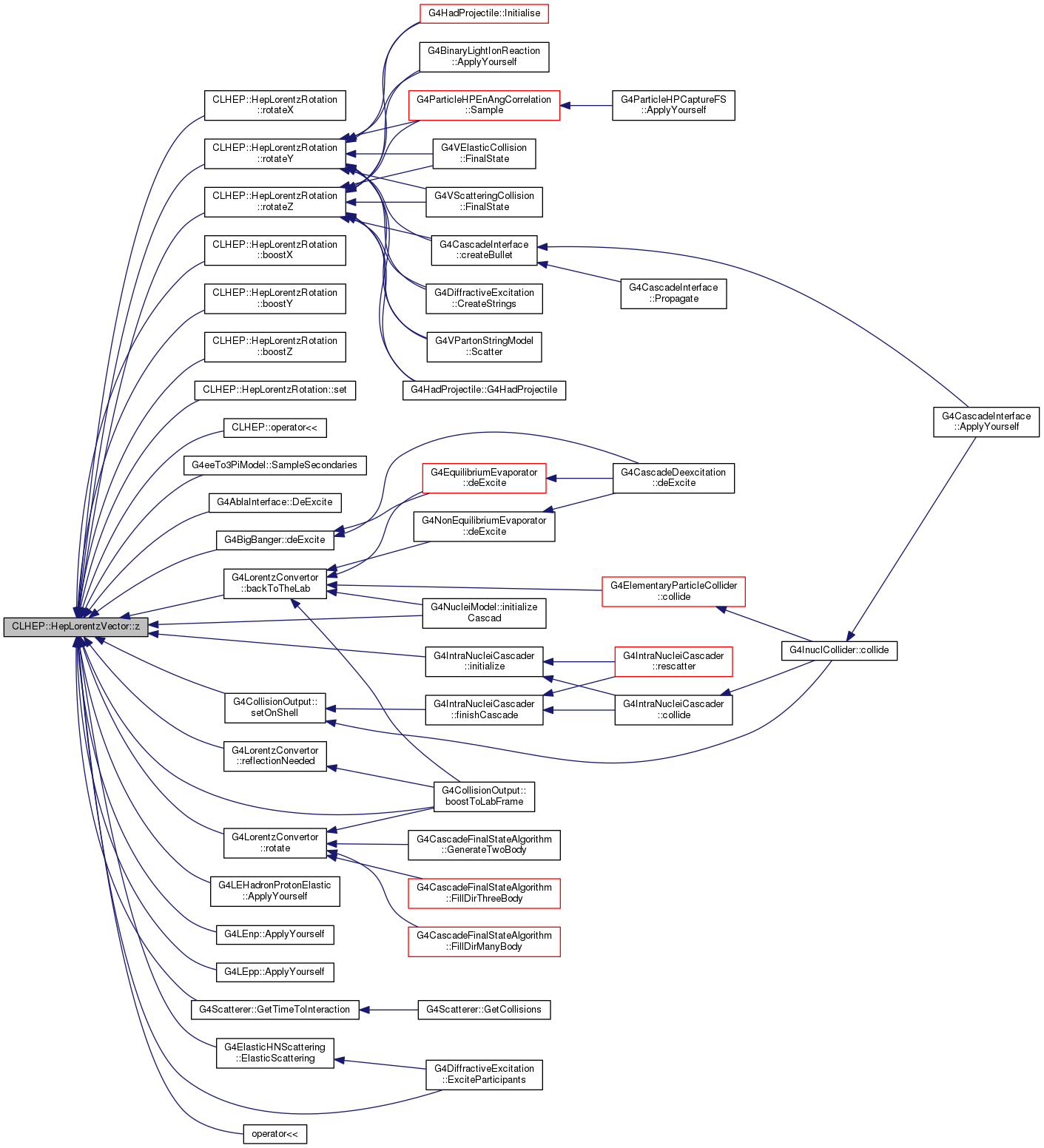
|
friend |
|
friend |
|
friend |
|
friend |
|
friend |
|
friend |
|
friend |
|
friend |
|
friend |
|
friend |
|
friend |
|
friend |